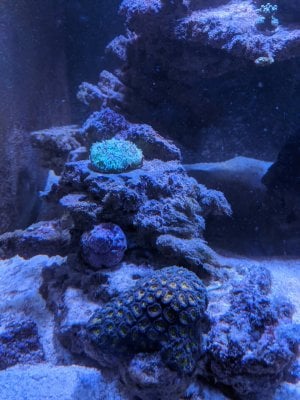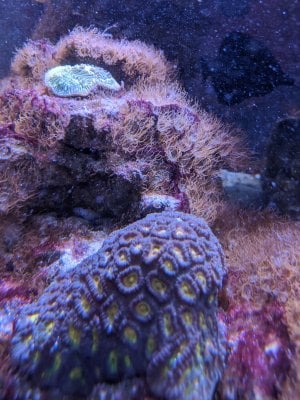So I used Aiptasia X and managed to reduce them dramatically.. I tried peppermint shrimp and they didn't help at all!
I replaced the rock and sand. Thought I'd got them all. Display was clear of them for about 2 weeks. Then I saw a few reappear.
Coincidently I fell in love with a Lemon Peel angel fish. After a few weeks I went back and bought her... Knowing she MAY nip at coral but I'm just starting out so only just bought 2 x zoas. Well I was very surprised when she obliterated any remaining aiptasia!! She has never nipped any the zoas or the leather I have in there... And I've not seen a single one since!
I imagine the risk for some is too great due to the fact there's no guarantee they're going to be reef safe but she's awesome and I don't regret anything!
I replaced the rock and sand. Thought I'd got them all. Display was clear of them for about 2 weeks. Then I saw a few reappear.
Coincidently I fell in love with a Lemon Peel angel fish. After a few weeks I went back and bought her... Knowing she MAY nip at coral but I'm just starting out so only just bought 2 x zoas. Well I was very surprised when she obliterated any remaining aiptasia!! She has never nipped any the zoas or the leather I have in there... And I've not seen a single one since!
I imagine the risk for some is too great due to the fact there's no guarantee they're going to be reef safe but she's awesome and I don't regret anything!










 , they’re like dandelions only worse because they have no season and always come back
, they’re like dandelions only worse because they have no season and always come back











